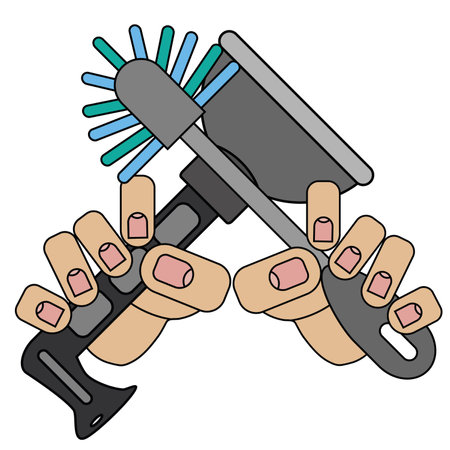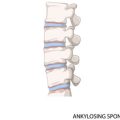1. Introduction to Electrical Stimulation Therapy
Electrical stimulation therapy, often called e-stim, is a popular treatment used by physical therapists across the United States. This therapy uses mild electrical currents to help manage pain, improve muscle strength, and speed up recovery from injuries. As more Americans look for non-invasive ways to heal and get back to their daily routines, e-stim has become an important tool in the world of rehab and sports medicine.
What Is Electrical Stimulation Therapy?
E-stim involves placing small adhesive pads (called electrodes) on the skin near the area needing treatment. These pads deliver safe, controlled electrical pulses that stimulate nerves or muscles underneath. The sensation usually feels like a gentle tingling or tapping, and most people find it comfortable.
The Role of E-Stim in Physical Therapy
Physical therapists use electrical stimulation for several reasons. Here’s a simple breakdown:
| Purpose | How E-Stim Helps |
|---|---|
| Pain Relief | Blocks pain signals from reaching the brain and releases endorphins (natural painkillers) |
| Muscle Strengthening | Activates weak or injured muscles to build strength after surgery or injury |
| Reduce Swelling | Improves blood flow and helps clear out excess fluid |
| Nerve Activation | Retrains nerves after injury or stroke to improve movement and coordination |
The Growing Popularity in the United States
E-stim has gained traction in the U.S. because it fits well with modern lifestyles—people want quick, effective treatments with minimal side effects. It’s now widely used in outpatient clinics, hospitals, athletic training rooms, and even at home with portable devices. Insurance coverage for e-stim is also increasing, making it more accessible for patients.
2. How Electrical Stimulation Works
Electrical stimulation therapy, often called e-stim in American physical therapy clinics, uses controlled electrical currents to activate nerves and muscles. This technology is based on well-understood scientific principles that help patients recover strength, reduce pain, and restore function.
How Does E-Stim Affect Nerves and Muscles?
Our bodies communicate through electrical signals, especially in the nervous system. When you use an e-stim device, electrodes placed on your skin send small, safe pulses of electricity into your body. These pulses can:
- Stimulate Nerves: By activating sensory or motor nerves, e-stim can help block pain signals (like a natural painkiller) or make muscles contract for exercise and strengthening.
- Activate Muscles: The electrical current can cause muscles to contract even if you cant move them voluntarily due to injury or illness. This helps maintain muscle tone and prevent atrophy.
Types of Electrical Currents Used in Physical Therapy
Different types of electrical currents are used depending on the treatment goals. Here’s a simple breakdown:
| Type of Current | Common Name | Main Purpose | Typical Use |
|---|---|---|---|
| Transcutaneous Electrical Nerve Stimulation | TENS | Pain relief | Chronic and acute pain management |
| Neuromuscular Electrical Stimulation | NMES | Muscle strengthening and re-education | After surgery or injury to rebuild muscle |
| Interferential Current Therapy | IFC | Pain relief and swelling reduction | Deep tissue pain or inflammation |
| Russian Stimulation | – | Intense muscle contraction for strengthening | Athletic training or severe muscle weakness |
The Science Behind E-Stim Settings
E-stim devices allow therapists to adjust settings like frequency (how fast the pulses are), intensity (how strong the current feels), and pulse width (how long each pulse lasts). By customizing these parameters, therapists can target different tissues and achieve specific outcomes, such as reducing pain or improving muscle strength.
Key Takeaway: Safe and Effective Stimulation
E-stim is carefully tailored by licensed physical therapists to match each patient’s needs. The combination of modern science and hands-on expertise helps ensure both safety and effectiveness in every session.

3. Common Uses in Physical Therapy
Pain Management
One of the most popular uses of electrical stimulation therapy in physical therapy clinics across the United States is pain management. Many patients experience chronic pain due to conditions like arthritis, lower back pain, or post-surgical discomfort. Electrical stimulation devices such as TENS (Transcutaneous Electrical Nerve Stimulation) units are often recommended by physical therapists to help block pain signals and provide relief without relying solely on medications.
| Condition | Example of Use |
|---|---|
| Arthritis | Applying TENS pads around the knee joint to reduce daily pain and improve mobility for older adults |
| Back Pain | Using electrical stimulation during sessions to decrease muscle spasms and pain in individuals with sedentary jobs |
| Surgery Recovery | Managing shoulder pain after rotator cuff repair for quicker return to daily activities |
Muscle Re-Education
Electrical stimulation also plays a key role in muscle re-education, especially after injuries or surgeries that cause muscles to weaken or become inactive. This is particularly important for American patients recovering from sports injuries, knee replacements, or strokes. By sending controlled electrical impulses, therapists can activate specific muscles, helping patients learn how to contract them properly again.
| Situation | How It Helps |
|---|---|
| Knee Surgery Recovery (ACL/Meniscus) | Stimulating the quadriceps muscle to prevent muscle loss and regain strength faster after surgery—common among high school and college athletes in the U.S. |
| Stroke Rehabilitation | Helping stroke survivors activate hand or foot muscles, supporting their journey back to daily independence at home and work |
| Ankle Sprains | Improving activation and coordination of ankle muscles for runners and weekend warriors eager to return to exercise routines |
Injury Recovery and Swelling Reduction
Another practical application is injury recovery, including reducing swelling and promoting healing. For example, after spraining an ankle during a basketball game or experiencing swelling from a repetitive strain injury at work, electrical stimulation can encourage circulation and decrease inflammation. This helps American patients get back on their feet—sometimes literally—more quickly.
Examples Relevant to American Patients:
- Athletes: High school football players use electrical stimulation to recover from hamstring strains during the sports season.
- Office Workers: Individuals with carpal tunnel syndrome benefit from targeted stimulation to manage wrist pain and swelling caused by long hours at the computer.
- Seniors: Older adults use this therapy as part of their physical therapy program after hip replacement surgery for improved healing and mobility.
Key Takeaways:
- Pain management, muscle re-education, and injury recovery are core reasons why electrical stimulation is used in American physical therapy clinics.
- The approach is personalized based on patient needs—from athletes returning to play to seniors regaining independence.
- This technology provides a non-invasive way to support healing and functional improvement alongside other therapies.
Understanding these common uses helps patients feel more comfortable with electrical stimulation as part of their rehabilitation journey in the U.S.
4. Benefits, Risks, and Contraindications
Electrical stimulation therapy (often called e-stim or ESTIM) is widely used in physical therapy clinics across the United States. While it offers many advantages for recovery and pain management, it’s important to understand both its upsides and potential downsides. Here’s a straightforward look at what you need to know.
Benefits of Electrical Stimulation Therapy
E-stim is popular because it can help with several issues that patients face during rehabilitation. Here are some of its main benefits:
| Benefit | Description |
|---|---|
| Pain Relief | E-stim can block pain signals from reaching the brain, making it easier for patients to move and participate in therapy. |
| Muscle Strengthening | This therapy can activate weak muscles, especially after surgery or injury, helping people regain strength faster. |
| Improved Blood Flow | The gentle pulses increase circulation, which may speed up healing and reduce swelling. |
| Prevention of Muscle Atrophy | For those who can’t move easily, e-stim helps prevent muscles from wasting away by keeping them active. |
| Enhanced Range of Motion | By reducing pain and muscle tightness, e-stim can make stretching and movement less difficult. |
Risks and Potential Side Effects
While e-stim is generally safe when used by trained professionals, there are a few risks to be aware of:
- Skin Irritation: Some people may notice redness or mild irritation where the electrodes are placed.
- Muscle Soreness: Just like after a good workout, muscles might feel sore after stimulation sessions.
- Tingling or Discomfort: Some individuals find the sensation odd or uncomfortable, though this usually goes away quickly.
- Burns (Rare): Improper use or malfunctioning equipment can rarely cause skin burns.
Contraindications: When E-Stim Isn’t Appropriate
Certain health conditions make electrical stimulation therapy unsafe. It’s important for your physical therapist to screen for these before starting treatment. E-stim should generally not be used in the following situations:
| Condition | Why It’s Not Safe |
|---|---|
| Pacemakers or Implanted Devices | E-stim could interfere with these devices, causing serious complications. |
| Pregnancy (Abdominal/Lumbar Area) | The safety for unborn babies hasn’t been established; other areas may be considered case by case. |
| Cancerous Lesions/Tumors | E-stim might stimulate cell growth in unwanted areas. |
| DVT (Blood Clots) | The increased circulation could dislodge a clot, leading to dangerous complications. |
| Sensory Impairments/Numbness | If you can’t feel the stimulation properly, you might not notice if it’s too strong or causing harm. |
| Open Wounds or Infected Areas | This could worsen infection or delay healing. |
| Epilepsy (Certain Types) | E-stim may trigger seizures in some people with epilepsy; always discuss your medical history first. |
A Balanced Perspective on E-Stim in Physical Therapy Practice
The science shows that electrical stimulation therapy can be a valuable tool in physical therapy. Its benefits often outweigh the risks for many patients when applied correctly and safely under professional supervision. However, it’s not suitable for everyone, so open communication with your physical therapist about your health history is key to getting the safest and most effective care possible.
5. What to Expect During a Session
Step-by-Step Overview of a Typical Electrical Stimulation Therapy Session
If you’re new to electrical stimulation therapy in a U.S. physical therapy clinic, it’s normal to feel curious or even a little nervous. Here’s what you can expect when you walk into your appointment:
Step 1: Initial Assessment
Your physical therapist will start by reviewing your medical history and asking about your symptoms, pain levels, and daily activities. They’ll explain the purpose of electrical stimulation and answer any questions you might have.
Step 2: Skin Preparation
The therapist will clean the area of your skin where the electrodes will be placed. This ensures good contact and reduces irritation.
Step 3: Electrode Placement
The therapist places adhesive electrode pads on specific muscles or nerves based on your treatment goals—like pain relief or muscle strengthening.
Step 4: Adjusting the Device
The therapist connects the electrodes to the stimulation device, then slowly increases the intensity. You’ll feel tingling or gentle pulsing, but it should never be painful. The therapist checks in with you to make sure you’re comfortable.
Step 5: Monitoring During Treatment
You’ll relax for about 10–30 minutes while the device does its work. Your therapist may stay nearby or check in periodically to ensure everything feels right.
Step 6: Post-Treatment Care
After removing the electrodes, your therapist checks your skin and asks how you feel. They may recommend stretches or other therapies as part of your recovery plan.
Patient Experiences vs. Therapist Perspectives
| What Patients Say | What Therapists Focus On |
|---|---|
| “It felt like a mild tingling or tapping.” | Ensuring patient comfort and safety throughout the session. |
| “I was surprised how relaxing it was.” | Selecting settings tailored to each patients needs and goals. |
| “My pain level dropped after just one session.” | Monitoring outcomes and adjusting future sessions for best results. |
Tips for a Positive Experience
- Wear comfortable clothing that allows easy access to the area being treated.
- Let your therapist know if you have any skin sensitivities or allergies.
- Share feedback during treatment so adjustments can be made right away.


